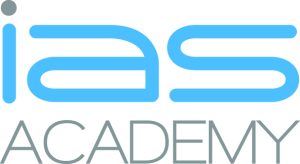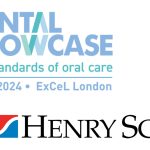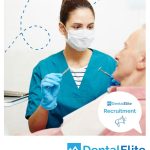It’s no surprise that the dentition has an intimate relationship with the food we eat. In everyday life, we may take it for granted that we can delve into a snack or meal on a whim, and enjoy it without a second thought.
For many patients with malocclusions, however, this isn’t the case. It’s important to understand the impact occlusion has on our eating experiences, and how it could severely affect a patient’s overall health. With this knowledge, clinicians can aid patients that hold these concerns, or identify and correct issues before they take effect.
Failure in function
A patient’s dentition plays a key role in the mastication process, being essential for chewing and breaking down solid foods.[i] Malocclusions can significantly impair the performance of these actions, especially when occlusal contacts are reduced.[ii]
If and when a patient raises their concerns, there is no telling the cause without a comprehensive assessment. Chewing difficulties are common ground for a variety of malocclusions, after all. They may be present in occlusal issues ranging from an overjet or an overbite, to an underbite or a crossbite.[iii]
The trouble caused by a malocclusion does not stop at chewing pain. Ineffective mastication could have knock-on effects throughout the entire digestive system.
Masticatory function is essential for the proper intake of nutrients, breaking down food into a manageable bolus that can be swallowed without difficulty, and from which the body can receive adequate nourishment.[iv]
Malocclusion, food and the body
Should a patient present with a malocclusion that affects their chewing, it’s likely that they will have altered some behaviours in order to cope. They may chew for longer in order to adequately break down food and compensate for their difficulties; change their diet to accommodate more manageable foods; or simply not have changed a thing, instead bearing the brunt of any subsequent digestive issues.
Without a change, these problems could make everyday life uncomfortable. One study found that a group of women with malocclusions faced a slower gastric emptying rate than a control group with normal occlusion.[v]This follows along with similar research surrounding ineffective chewing and the digestive process, potentially resulting in digestive distresses.v By interfering with the gastric emptying rate, for example, patients may succumb to nausea, stomach pains, and bloating, under the medical condition gastroparesis.[vi]
Connections have been made between orthodontic treatment and temporomandibular disorders (TMDs). Commonly associated with a variety of malocclusions, TMDs are characterised by pain in the temporomandibular joints and facial muscles.[vii] This can contribute to the immense discomfort felt when chewing. When this becomes too overwhelming, patients may adjust their diet as a compromise. The danger is that these accommodations could be detrimental to their general health. If masticatory problems mean patients avoid harder foods such as raw vegetables and fruit, tough fibrous meats, or dry hard foods such as whole grains and nuts, they may be missing out on nutritionally dense sources of proteins, carbohydrates, vitamins and minerals.iv
It’s important to carefully consider care for individuals with malocclusions that have a severely disordered relationship with food, and are, for example, anorexic or bulimic. There is a significant association between the presence of eating disorders and a dissatisfaction with chewing ability.[viii] For the appropriate patients, restoring optimal occlusion not only has the potential to improve a patient’s self-perceived image, but may enormously benefit their nutritional rehabilitation. Using orthodontics as part of an empathetic, multidisciplinary solution may be ideal.[ix]
A clinical approach
The relationship between malocclusions and food is deeply intertwined. A complete understanding of occlusion is vital when providing effective care, demanding an awareness of how malocclusions can develop, be identified, and subsequently treated. Optimal treatments could improve patients’ lives from their ability to chew, to aesthetic outcomes that can boost their confidence and self-image.[x]
Malocclusions that affect masticatory functions, and ultimately a patient’s general health, may be rectified with appropriate orthodontic solutions. These include clear aligner therapy and the use of fixed braces, however the GDC demands only adequately trained and competent clinicians provide these.[xi] Clinicians should first ensure they have a complete grasp on occlusion before they tackle these challenges, though.
Dental professionals looking to have an impact that extends past the dental chair should seek exceptional training that improves their overall skillset. The Occlusion: Basics & Beyond course from the IAS Academy is the most tangible, comprehensive occlusion training in the world. Across 34 hours of CPD accredited modules, clinicians can develop their understanding of occlusion in a manner that is not offered anywhere else, improving their clinical offering for each and every patient.
Oral health has long been known to have a complex relationship with general health, and it has an ever-increasing impact on the way patients interact with food. By developing a clinical understanding of occlusion, and how it can be improved, dental professionals have the ability to improve patient health in a manner that reinvigorates everyday life.

For more information on upcoming IAS Academy training courses, please visit www.iasortho.com or call 01932 336470 (Press 1)
[i] Nishi, S. E., Basri, R., Alam, M. K., Komatsu, S., Komori, A., Sugita, Y., & Maeda, H. (2017). Evaluation of masticatory muscles function in different malocclusion cases using surface electromyography. Journal of Hard Tissue Biology, 26(1), 23-28.
[ii] Magalhães, I. B., Pereira, L. J., Marques, L. S., & Gameiro, G. H. (2010). The influence of malocclusion on masticatory performance: a systematic review. The Angle Orthodontist, 80(5), 981-987.
[iii] Dorr, L. (2022). Identifying Patients for Ortho Treatment. Dental Products Report, 56(11).
[iv] Cicvaric, O., Grzic, R., Simunovic Erpusina, M., Simonic-Kocijan, S., Bakarcic, D., & Ivancic Jokic, N. (2023). Association of Masticatory Efficiency and Reduced Number of Antagonistic Contacts Due to Extraction, Changing Dentition or Malocclusion in Children. Dentistry journal, 11(3), 64.
[v] Kumar, A., Almotairy, N., Merzo, J. J., Wendin, K., Rothenberg, E., Grigoriadis, A., … & Trulsson, M. (2022). Chewing and its influence on swallowing, gastrointestinal and nutrition-related factors: a systematic review. Critical Reviews in Food Science and Nutrition, 1-31.
[vi] NHS, (2023). Gastroparesis. (Online) Available at: https://www.nhs.uk/conditions/gastroparesis/ [Accessed September 2023]
[vii] Trivedi, A., Agarwal, S., Gupta, I., Goswami, R., & Mowar, A. (2022). A Comparative Evaluation of Malocclusion and Associated Risk Factors in Patients Suffering with Temporomandibular Disorders: A Systematic Review and Meta-analysis of Observational Studies. European Journal of General Dentistry, 11(03), 149-157.
[viii] Chiba, F. Y., Chiba, E. K., Moimaz, S. A. S., Matsushita, D. H., Garbin, A. J. Í., & Garbin, C. A. S. (2022). Malocclusion and its relationship with oral health-related quality of life in patients with eating disorders. Dental Press Journal of Orthodontics, 27, e2220305.
[ix] Chirravur, P., Chirravur, P., & Gopi-Firth, S. (2022). Seeking True Multidisciplinary Approach to Eating Disorders: Dentists as Case Finders. SVOA Dent, 3, 123-126.
[x] de Couto Nascimento, V., de Castro Ferreira Conti, A. C., de Almeida Cardoso, M., Valarelli, D. P., & de Almeida-Pedrin, R. R. (2016). Impact of orthodontic treatment on self-esteem and quality of life of adult patients requiring oral rehabilitation. The Angle Orthodontist, 86(5), 839-845.
[xi] General Dental Council, (2013). Scope of Practice. (Online) Available at: https://www.gdc-uk.org/docs/default-source/scope-of-practice/scope-of-practicea2afa3974b184b6a8500dd0d49f0b74f.pdf?sfvrsn=8f417ca8_7 [Accessed September 2023]























